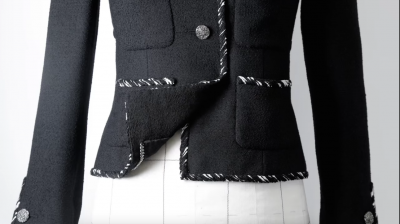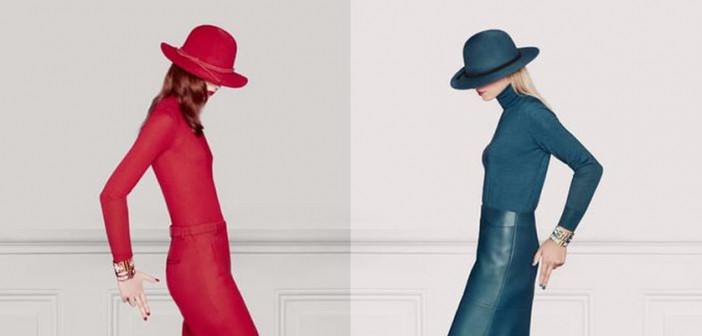Chanel, Hermès rank as top brands worth premium pricing: survey
The popularity of a widely bought brand does not always sync with consumers’ perception of its value and luxury credentials, according to a new survey by the Luxury Institute.
For its Luxury Brand Status Index series, Luxury Institute surveyed affluent women from seven of the world’s wealthiest nations to gain insights on which brands hold the most clout in terms of quality, exclusivity, social status and overall ownership. Consumer opinion is tied to whether she feels the asking price of a premium product is worth it and correlates directly to the brand’s perceived value by those who shop it frequently and those who aspire to do so.
“Luxury and premium brands provide their customers quality and expertly crafted products and deliver them with empathy, trustworthiness and generosity to build client relationships,” said Milton Pedraza, founder and CEO of Luxury Institute.
“The result is a compelling product paired with an experience that cannot be found within the mass market,” he said. “These brands have a compelling value proposition that appeals to affluent women.”
Luxury Institute’s “2016 Global Luxury Brand Status Index (LBSI) – Women’s Fashion” surveyed 3,999 affluent women from the United States, United Kingdom, France, Germany, Italy, China and Japan. The women surveyed gave more than four dozen brands a score of 0-10 based on the following prompts: This brand delivers consistently superior quality; This brand is truly unique and exclusive; This brand is purchased by people who are admired and respected and This brand makes its buyers feel special across the full customer experience.
Flexing credentials
The value of a luxury product is not solely based on market retail price, but rather a combination of quality, exclusivity and pride of ownership. If a brand is popular it is not a true representation of its luxury credentials.
For example, U.S. fashion label Calvin Klein is immensely popular among affluent women, with most consumers likely to have purchased from the brand in the past year. However, Calvin Klein’s popularity does not translate to a high LBSI score, with the brand placing at the bottom of Luxury Institute’s overall ratings.
Similarly, the most popular fashion brands among women in the U.S. are Calvin Klein, Polo Ralph Lauren and Michael Kors. While popular and on the lower end of the price spectrum in relation to higher-end brands, these labels are not always associated with the exclusivity of true luxury.

Michael Kors, resort 2016
Familiarity and popularity status does not always translate to increased sales, either.
While France’s Chanel was the most familiar fashion house among respondents, the atelier only placed second when respondents were asked which brand they plan to purchase from next. Based on next purchase plans, Chanel placed behind Calvin Klein and ahead of Polo Ralph Lauren and Burberry.
If a consumer agrees that a brand is worth premium prices, it is often an indication of the brand’s overall value. As such, affluent women ranked Chanel and French leather goods maker Hermès as the two fashion houses most worth their premium asking prices, followed by Christian Dior, Louis Vuitton and Prada.
To highlight value and justify high price tags, luxury brands often communicate their message of worth through the use of craftsmanship. Chanel most recently took this approach to express the value of its most exclusive collection, its couture offerings.
To do so, Chanel took consumers inside its house to cultivate exclusivity and mystery.
The latest chapter of the ongoing Inside Chanel series focuses on the creation of the brand’s haute couture clothing. While the reveal will satisfy the modern consumer’s craving for transparency, the breakneck speed of the video and repeated use of Coco Chanel quotes maintains the brand’s more enigmatic aspects (see story).

Still from Inside Chanel N°13
Luxury brands are also adept in customer experience and making the consumer feel special. The LBSI results showed that a mix of well-established and newer brands are well-versed in this area, with Hermès, Temperley London, Chanel, Brunello Cucinelli and Proenza Schouler as the top five.
Despite an increase in digital communications, the luxury space still relies heavily on word of mouth recommendations. Word of mouth remains as the best measure of satisfaction if a consumer has enjoyed her experience with a brand’s products and services.
Globally, affluent women who partook in the survey are most likely to recommend Loro Piana, Chanel, Hermès, Akris and Brunello Cucinelli to family and close friends.
Smaller, boutique labels proved themselves within the survey responses as well, showing that a brand does not need a rich heritage to resonate with affluent consumers when considering value and standing.
“It was interesting to see that boutique luxury brands such as Temperley London, Brunello Cucinelli and Proenza Schouler scored nearly as high as well established luxury brands such as Hermès and Chanel,” Mr. Pedraza said.
“Specifically, Proenza Schouler received an overall 7.66 LBSI, higher than luxury veterans such as Louis Vuitton, Dior and Prada,” he said. “The luxury customer base is open to less recognized brands that are able to provide an exclusive and unique product paired with an exceptional customer experience.
“Brands can no longer rely heavily on their rich heritage and recognition to keep clients loyal as competition increases and customers recognize the value of boutique brands.”
Measures of desire
Having an understanding of which brands are most desirable within a particular market can help labels structure strategies in that location.
Exclusivity and desirability go hand in hand for China’s wealthy, with the same brands ranked in the top five for both characteristics in a new study by Promise Consulting and BNP Exane.
Hermès takes home top prize for exclusivity, which measures the consistent quality of goods, the brand’s prestige, the valuation of the brand’s customers and its ability to justify a high price point. Chinese consumers are generally becoming more sophisticated luxury consumers, making for tougher competition between labels for their attention and affection (see story).
Likewise, an in depth understanding of consumer behavior in different markets is also useful as brands navigate the likes and interests of various demographics.
As the luxury landscape continues to evolve and geopolitical turmoil affects emerging markets, the brands that will come out on top must be able to adapt to the resulting consumer behavior.
On Sept. 29 in New York, part of a 15-city world tour of sorts, Albatross Global Solutions shared insights from its annual research study “The Journey of the Luxury Consumer” to better understand motivators, the purchase journey and the consumer landscape on a global scale. A key finding has been the definition of luxury itself as consumer interest has developed from a desire for exclusivity to wanting ensured craftsmanship from the high-end brands they interact with (see story).
Raising a brand’s standing among the opinions of affluent consumers presents its challenges.
“Brands can only improve their LBSI by improving these factors in a genuine way that resonates with the customer,” Mr. Pedraza said.
“Luxury CEOs tell us that approximately 60 percent of the value derived by the luxury client is in the luxury product, and 40 percent of the value is in the relationship building capabilities,” he said. “Brands need to continue to remain relevant, especially in this challenging environment.”



